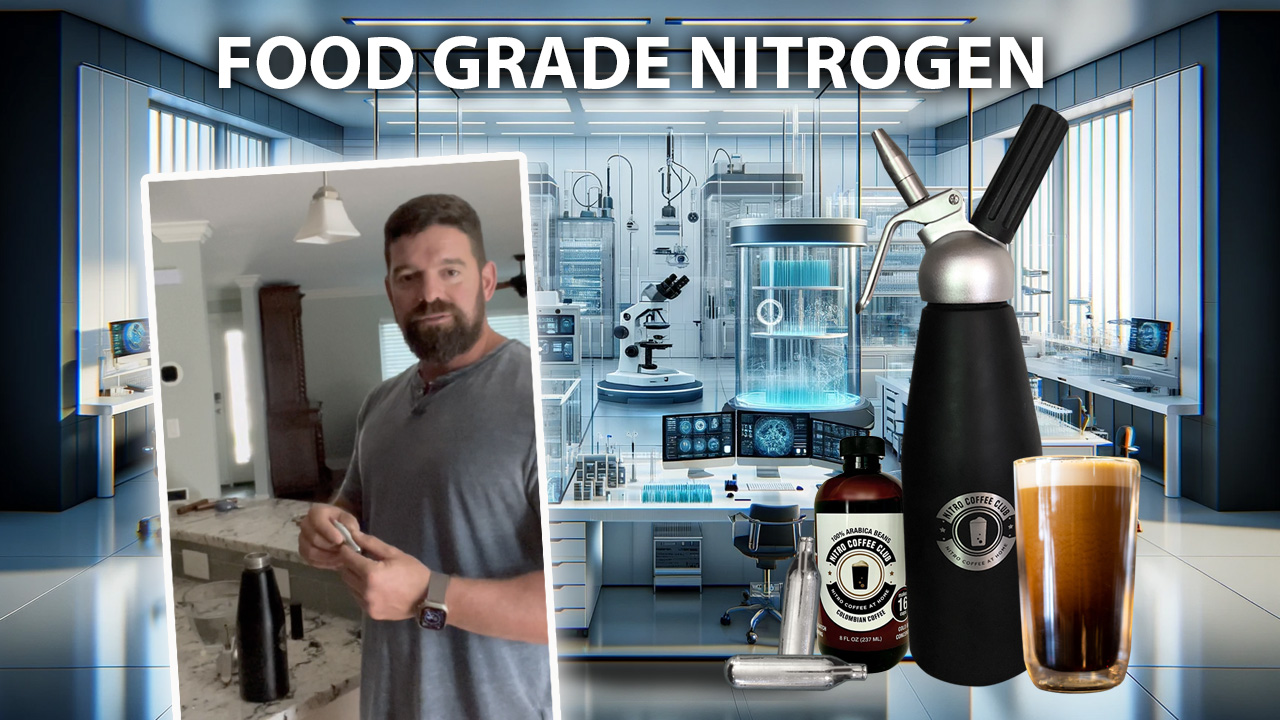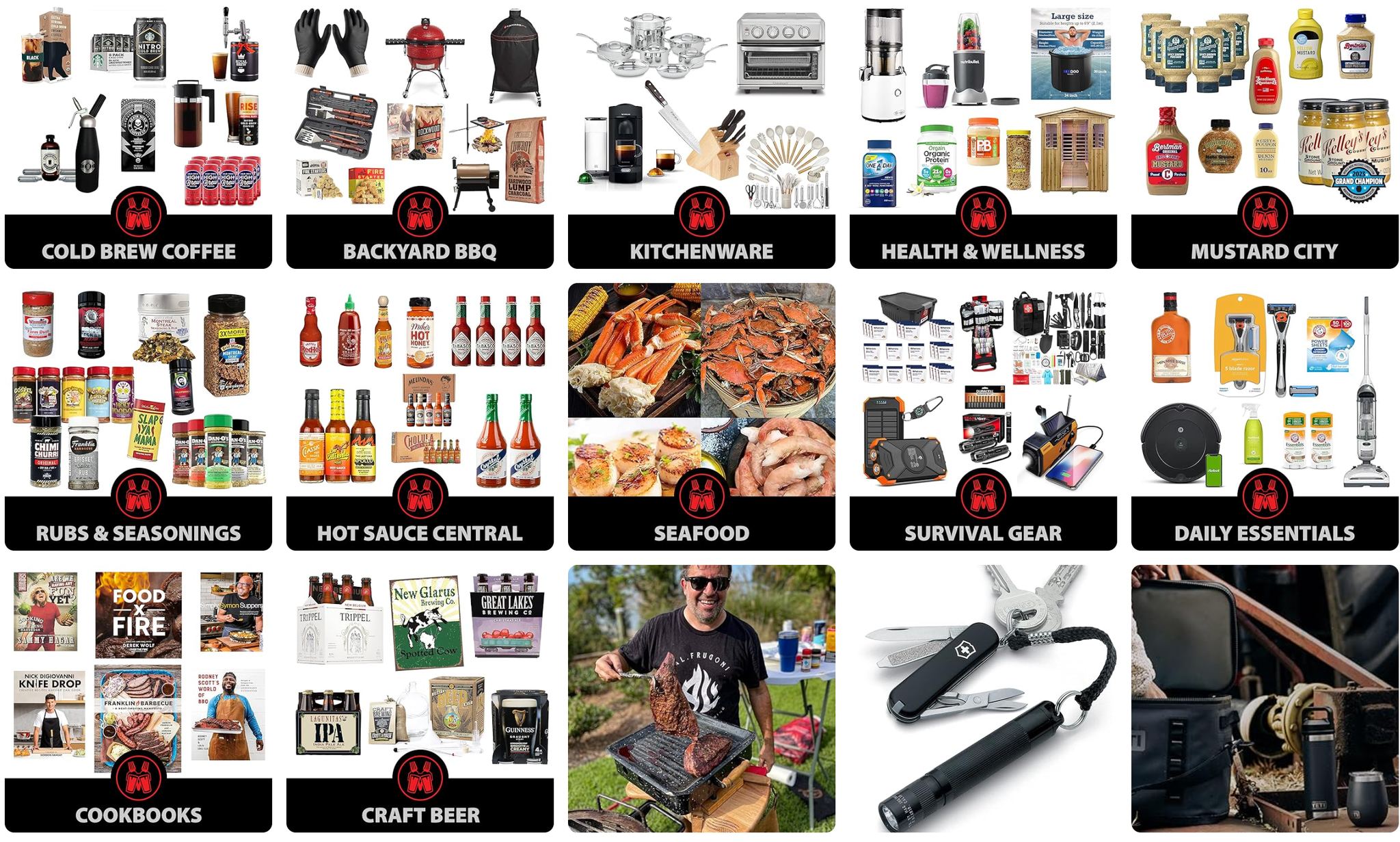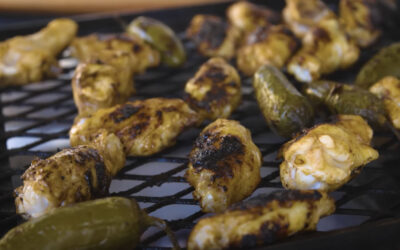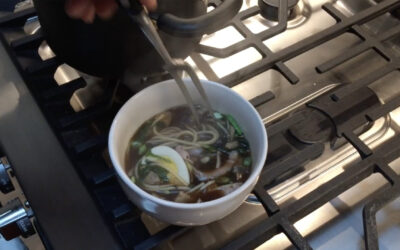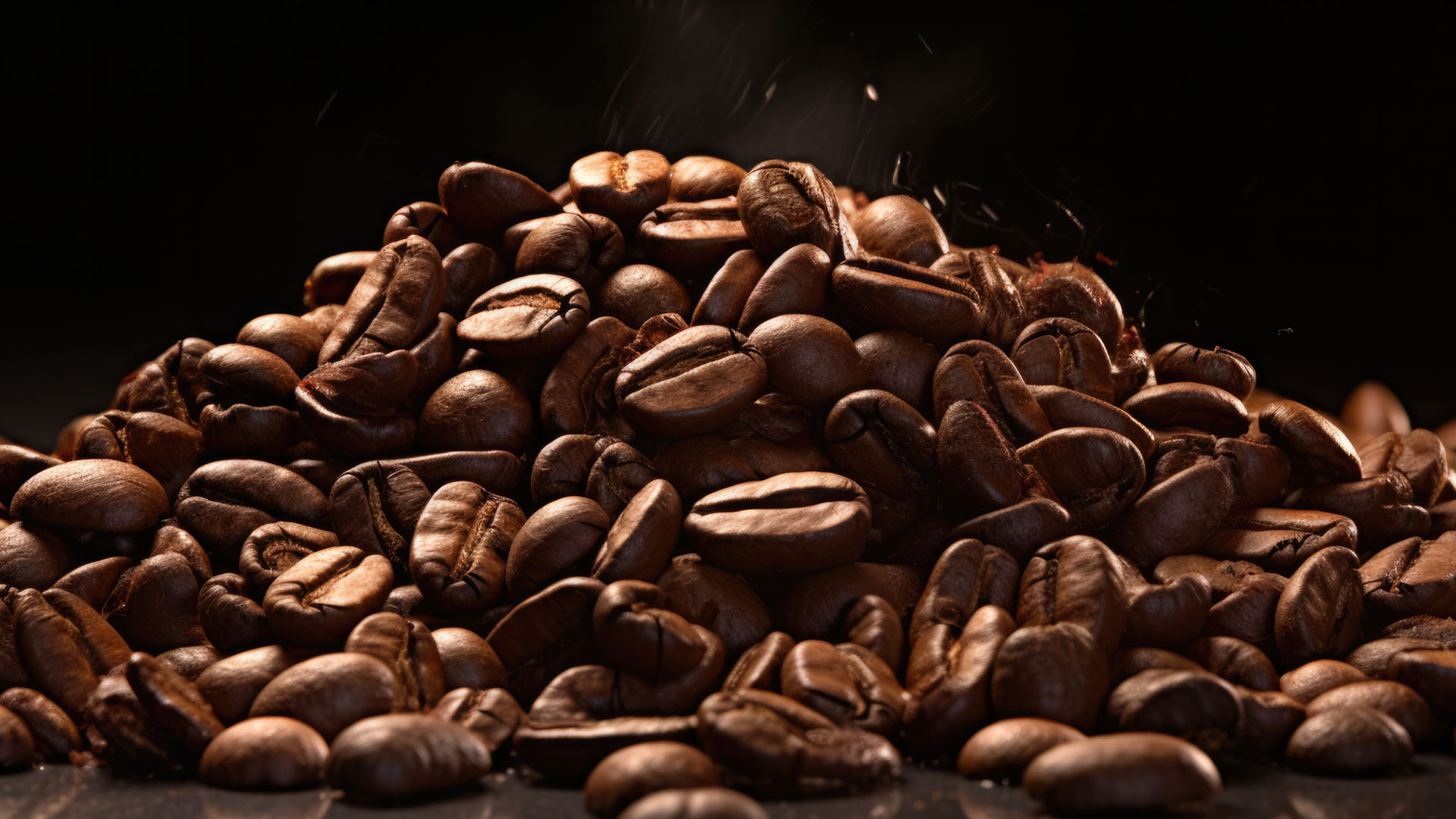
Let’s dive into the Differences between Cold Brew Coffee vs Hot. Exploring this isn’t merely a matter of warmth, but rather an immersive journey into the distinct realms of brewing techniques. You’ll learn why cold brew might be your go-to for a smoother, less acidic cup, or why hot brew can give you that immediate aromatic kick to start your day right.
We’re unpacking everything from the science behind each method to practical tips on crafting the perfect cup at home. Additionally, we’ll delve into how these brewing variations influence the flavor profile, caffeine levels, and potential wellness advantages. If your morning coffee routine has become a bit too predictable, diving into this article might just introduce you to an array of tastes you’ve never imagined.
Would you like to see our Curated Cold Brew Coffee’s? Visit Our Shop!
This post may contain affiliate links which means Pints, Forks & Friends may receive commission for purchases made through links. We only recommend products that we personally believe in and use. Learn more on our Privacy Policy page.
Check out PFF’s Curated Cold Brew Coffee Category
Start your day with us on Amazon!
Cold Brew Coffee vs Hot - Table of Contents
Table Of Contents:
- The Science of Cold Brew Coffee
- Crafting the Perfect Cup
- Cold Brew Coffee vs. Hot
- The Versatility of Cold Brew Concentrate
- Health Benefits and Caffeine Levels in Cold Brew
- The Art of Serving Cold Brew Coffee
- Understanding Roast
- FAQs in Relation to Differences Between Hot Brewed and Cold Brewed Coffee
- Conclusion
The Science of Cold Brew Coffee
Cold Brewing vs. Hot Brewing
When it comes to brewing coffee, temperature isn’t just a number—it’s the boss. In cold brew coffee, cold water gets cozy with coffee grounds for an extended period, usually 12 to 24 hours. This slow dance drastically alters what compounds find their way into your cup compared to hot brewing.
In the realm of coffee chemistry, cold and hot water don’t play favorites with the same molecules. The colder temps in cold brewing slow down extraction processes, leading to less acidity and bitterness—a smooth operator move that gives cold brew its mellow character.
But let’s talk specifics: research shows that a cup of joe from a hot brew can swing anywhere from 85mg to 160mg of caffeine per 8oz serving. On the flip side, when you take your time and go low-temp with a cold brew, you’re looking at about 66% less acidity than its hotter counterpart but potentially more caffeine—ranging from roughly 160mg up in some cases all the way up to overachiever levels at around 319mg for every sweet sixteen ounces served.
The Role of Temperature in Coffee Brewing
This whole scenario is like cooking on low heat versus blasting something on high—you get different textures and flavors because science says so. And this is why we see such vast differences between these two methods beyond just “one’s hot; one’s not.” It’s fascinating to dive into the scientific principles behind these cooking techniques. Grasping these concepts boosts our cooking prowess, empowering us to choose our meal preparation methods wisely for optimal outcomes.
Crafting the Perfect Cup
Selecting the Right Coffee Beans
Think of your cold brew like a summer blockbuster. The right cast can turn a good story into an unforgettable experience. Just as the success of a summer blockbuster hinges on its stellar cast, selecting premium coffee beans is essential for crafting an impeccable cold brew. Dark roast coffee tends to give your brew a smooth, chocolatey vibe while lighter roasts bring out brighter, fruitier notes.
The impact of roast on your cold brew’s flavor is undeniable. For those looking to dive deeper into how different roasts affect their drink, Coffee Chemistry offers some eye-opening insights.
From Beans to Brew
Moving from selecting beans to brewing isn’t just about dumping grounds in water and calling it a day; it’s an art form. To create your own cold brew concentrate at home, you’ll need patience and precision.
Start with coarse-ground coffee beans soaked in cold water for 12-24 hours—this slow dance allows for gentle extraction, leading to less bitterness compared to hot brewed methods. After this period, what you get is not just any regular old joe but a richly flavored concoction that could be served as-is over ice or diluted with water or milk according to taste.
Cold Brew Coffee vs. Hot
When you’re weighing your options between a cold brew and hot coffee, think about this: one’s like a marathon runner—steady and enduring; the other’s more of a sprinter—quick and intense. The key differences? Considering your choice between iced java and a steaming mug, it essentially hinges on the method of preparation, flavor nuances, tartness scale, and indeed, the kick from caffeine.
The Science Behind the Brews
Hot water acts fast on coffee grounds, extracting flavors (and acids) quickly to give hot brewed coffee its characteristic boldness. But with cold brew coffees? Cold water takes its sweet time, leading to less bitterness. In fact, research suggests that cold brewed coffee can have up to 66% less acidity than its fiery counterpart.
This smoother sip doesn’t just score points for being kinder on your stomach—it also changes the game in terms of flavor profile. A decrease in acidity unlocks a spectrum of subtle flavors, elevating the coffee experience for those eager to explore beyond the surface.
Caffeine Kick: Cold Brew Coffee vs Hot
Diving into the nitty-gritty of what makes our coffee give us that much-needed zing. While many assume hotter means stronger when it comes to caffeine content titratable acidity begs us not be too hasty. Sure enough studies show that an 8oz cup of regular hot java could pack anywhere from 85mg-160mg of energy juice but don’t underestimate cold brew – it can range significantly too with some servings hitting as high as 319mg per16 oz.
The Versatility of Cold Brew Concentrate
Beyond the Basic Cup
Who knew that a cold brew concentrate could be the superhero of your morning routine? This powerhouse ingredient isn’t just for sipping straight—it’s a canvas waiting for your creativity. Visualize blending it with an assortment of components to concoct distinct flavors that’ll have your taste receptors twirling in delight.
First up, let’s talk about jazzing up your regular milk or oat milk latte by swapping in cold brew concentrate. The result? A smooth, rich flavor profile with less acidity than its hot-brewed cousin, giving you all the kick without the bite. Now, if you’re feeling adventurous, why not mix cold brew concentrate with soda water? You get an effervescent coffee drink that’s perfect for those long summer days when you need refreshing but also caffeine.
Last but certainly not least, for those who love their cocktails but also adore coffee—cold brew concentrate is here to shake things up. Mixing this versatile elixir into whiskey or rum-based drinks adds depth and complexity that’ll have everyone asking for your secret recipe. So next time you reach for that bottle of cold brew concentrate remember: it’s more than just coffee; it’s a gateway to endless delicious possibilities.
Health Benefits and Caffeine Levels in Cold Brew
If you’re the type who’s always on a quest for that perfect cup of joe, let me toss a curveball your way: cold brew. Cold brew not only glides down more effortlessly than its steaming counterpart but also comes loaded with notable health advantages.
First off, cold brew is easier on the stomach. Thanks to its lower acidity—66% less than its hot counterpart—it’s like giving your gut a mini-vacation. And if you’ve ever winced after a sip of overly bitter hot coffee, here’s good news: cold brewing cuts back on bitterness too.
But here comes the caffeine kicker: levels in cold brew vary widely, swinging from 160mg to 319mg per 16oz serving. That’s quite the range. Compared to regular hot coffee, which generally floats between 85mg and 160mg per cup, choosing cold brew could mean either upping your caffeine game or dialing it back—all depending on how strong you make it.
The Art of Serving Cold Brew Coffee
Iced Cold Brew vs. Iced Coffee
When you think iced coffee, you might just picture hot coffee poured over ice. But let’s not get it twisted; iced cold brew and traditional iced coffee are like night and day. Iced cold brew is smoother, thanks to its brewing process with cold water for hours or even days, offering a unique taste profile that’s less acidic and bitter than its iced counterpart.
This means when you serve up some rich aromas from an iced cold brew compared to the more bite-y tang of regular brewed-then-chilled coffee, your palate gets treated to a whole different level of flavor exploration.
Adding a Twist with Soda Water
Mixing soda water into your served cold brew coffees isn’t just about staying hydrated—it’s about taking refreshment to the next level. Imagine the deep flavors of your favorite dark roast lightened up by effervescent bubbles dancing on your tongue—a perfect pick-me-up for those long summer afternoons.
Sure, adding soda water might sound out there if you’re used to straight shots or milk-based concoctions. But trust me, this mix creates uniquely refreshing drinks that highlight every subtle note in your carefully crafted concentrate without drowning them out—making each sip as exciting as it is satisfying.
Understanding Roast
Roasting coffee beans is like turning grapes into wine; it’s where the magic happens. The roast level of your coffee beans has a huge impact on your cold brew’s flavor profile, making or breaking that perfect cup.
Selecting the Right Coffee Beans
The journey to an exceptional cold brew starts with choosing the right roast. Darker roasts are often favored for their bold, rich flavors which can stand up to the dilution process in cold brewing. But here’s a twist: lighter roasts bring out more nuanced, floral notes that might just surprise you with their depth when brewed cold. So don’t shy away from experimenting.
Diving deeper into this topic, this guide on coffee roasts provides insight into how different levels of roast affect taste and aroma.
From Beans to Brew
Transitioning from choosing the right beans to the art of brewing unveils that mastering the interplay between time and heat is essential for unlocking those coveted, rich flavors in our coffee. Cold brewing requires patience as it unfolds over hours but rewards us with smoother, less acidic sips compared to its hot-brewed counterpart.
A step-by-step approach ensures clarity in this methodical transformation from beans to brew, guiding through selecting water quality and ratio specifics for optimal extraction.
Nitro Coffee Club Cracks the Cold Brew Code
Are you a fan of that silky, smooth nitro cold brew coffee from your favorite café but cringe at the thought of spending a small fortune every time you crave it? Say hello to Nitro Coffee Club, your at-home barista that’s about to change the game! Now, with the exciting introduction of our new Decaf nitro cold brew coffee option, everyone can indulge in their beloved nitro cold brew experience any time of the day without the caffeine buzz. Whether you’re looking to enjoy a late-night treat or you’re sensitive to caffeine, our Decaf option ensures you’re never left out of the nitro cold brew delight.
With Nitro Coffee Club, indulging in your beloved nitro cold brew coffee becomes an effortless, enjoyable, and, most importantly, affordable experience right in the comfort of your own home. Gone are the days of complex brewing methods and bulky, expensive equipment. Nitro Coffee Club brings simplicity and elegance to your kitchen with its easy-to-use system. Whether you’re a coffee aficionado or a curious newbie, our intuitive design ensures that you can craft the perfect cup of nitro cold brew with just a few simple steps. No more intimidating machinery or convoluted processes; it’s all about convenience and quality with Nitro Coffee Club.
Think about the savings! With each cup costing a fraction of what you’d pay at a coffee shop, Nitro Coffee Club quickly pays for itself. Imagine the luxury of sipping on unlimited nitro cold brew coffee without worrying about the impact on your wallet. Plus, you have the freedom to customize your brew to your heart’s content. Want it stronger, sweeter, or infused with your favorite flavors? You’re in control, allowing you to experiment and discover new combinations that can’t be found anywhere else, including our game-changing Decaf option.
Join the Nitro Coffee Club today, and embrace the revolution of home-brewed nitro cold brew coffee. Say goodbye to overpriced café visits and hello to unlimited, delicious, and smooth nitro cold brew that’s just a pour away, now with the added flexibility of caffeine-free enjoyment. Why settle for less when you can have the best right at home? Start your journey with Nitro Coffee Club and elevate your coffee experience to new heights, any time of day! If you want to learn more about what nitro cold brew is, read our latest post.
FAQs in Relation to Differences Between Hot Brewed and Cold Brewed Coffee
Is Hot or Cold Coffee better for you?
Cold brew is gentler on the stomach thanks to its lower acidity. It’s a smoother choice for sensitive systems.
Why does iced coffee taste better than hot coffee?
Iced coffee often tastes smoother and sweeter because cold temps soften bitterness, highlighting subtle flavors instead.
Which is better cold brew or hot brew coffee?
Cold brew wins if you’re after low acidity and smooth flavor. Hot brew shines for aroma and tradition.
What is the point of cold brew coffee?
Cold brewing pulls out fewer acids, making a sweet, smooth cup that’s easy on your belly and versatile in recipes.
Conclusion
Exploring the differences between hot brewed and cold brewed coffee reveals a world of flavor, caffeine content, and brewing methods. You now know that cold brew offers a smoother taste with less acidity, while hot brew provides an immediate aromatic experience.
Dive into making your own cup. Understand how temperature plays a crucial role in extracting flavors. Choose your beans wisely to enhance your coffee’s profile.
Remember: Whether it’s the rich aromas of hot brewed or the crisp smoothness of cold brewed, each has its place in the coffee spectrum. Embrace these unique tastes for what they are—opportunities to tailor your caffeine fix to exactly how you like it.
At day’s end, we’ve traversed from science to sip; understanding not just preferences but processes makes every cup more meaningful. So go ahead—experiment with both techniques and find your perfect blend.
Find us on Amazon! Pints, Forks & Friends Shop
The Latest…
Christmas Ale Bacon Recipe
The Ultimate Christmas Ale Bacon Recipe: Joy in Every...
Discovering Meat Church Recipes: BBQ, Beer & Texas Flavors!
Exploring Meat Church recipes is like embarking on a...
Exploring Yakamein: New Orleans’ Hidden Culinary Treasure
Think you got what it takes to navigate a soup bowl? Allow...


